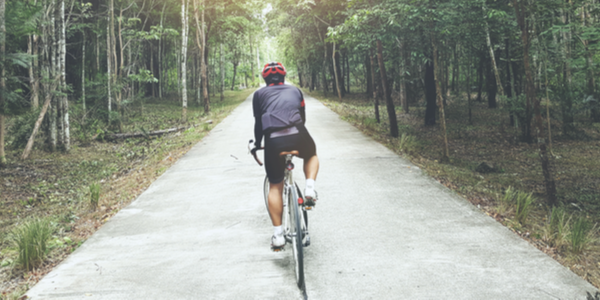
These days, walking to school is a rarity for most children. Since 1973, the percentage of children who walk to school has dropped by almost 30 percent. This means more riding and less physical activity.
The dramatic drop in activity levels is believed to be a big influence on the nation's rising childhood obesity rate. It may compromise kids' health on many levels, too, though encouraging walking can redirect such risks.
We breakdown the benefits of walking to school and just how you get children more active this school year.
How Walking to School Benefits Kids' Health
From improving concentration to meeting physical activity requirements, school kids can reap major benefits by walking or biking to school.
1. Walking to school improves concentration.
A large Danish project, titled the "Mass Experiment 2012," examined the links between diet, exercise, and concentration. It featured nearly 20,000 schoolchildren between the ages of 5 and 19.
Those who walked to school concentrate better than those who use transportation services such as a car, train, or bus. The simple act of walking lasted about four hours, over half of the school day!
2. Active commuting can lead to healthier weights.
A study in BMC Public Health found "active commuting," or walking or cycling, was associated with lower adiposity. This is compared to school children who "passive commute," or travel by car or public transit.
What’s more, the researchers analyzed more than just body mass index (BMI). They considered body fat and muscle mass, which can be more significant measures in regards to health status.
3. Walking or biking helps kids meet physical activity requirements.
Today, most children do not reach the minimum requirement of physical activity for a variety of reasons. So, riding a bike or walking to school certainly helps.
On average, school children need about 60 minutes of exercise each day. Meeting these recommendations can gift some serious benefits for children, including:
• Enhances classroom attendance, behavior, and performance
• Builds stronger muscles and bones
• Reduces the risk of heart disease, diabetes, and other chronic diseases
• Cares for mental health by staving from stress, depression, and anxiety
• Initiates a better night's rest
• Improves overall physical and emotional well-being
Active transportation also has environmental and economical benefits. Less vehicle commuting means less air pollution from fuel and finances needed for gas and wear and tear of the car.
School Bus Transportation When Walking Is Not an Option
The benefits of walking to school are worthy, though less and less kids are doing so. The decline of walking and bicycling did not happen overnight, either.
In 1969, 48 percent of children 5 to 14 years of age usually walked or bicycled to school. Fast forward to 2009, 31 percent of students who live within one mile of school. And of this percentage, only 35 percent usually walked or biked to school.
More parents and kids are relying on school busses and other passive commuting. Many factors may be related to a number of barriers, including:
• Distance to school
• Traffic-related danger
• Weather
• Crime danger
• Opposing school policy
Fortunately, there have been efforts made to overcome these barriers. For instance, Safe Routes to School Programs aim to advance safe walking and biking to and from school schools. Walk and Bike to School Day hopes to inspire lasting change in communities.
Tips for Safe School Walking & Biking
But how do you know if your child is safe to walk to school? Usually, children are ready to walk to school alone around age 10. Until then, or if a beginner, walk with them to familiarize routes and inform on the rules of the road. Consider these tips when walking with children to school:
• Use stop signs, all traffic signals, and crosswalks
• Hold hands as needed and look both ways before crossing streets
• Cross the street under the direction of a crossing guard
• Walk with a commuting group such as neighbors or family friends
• Adopt a buddy system
• Wear helmets and other protective gear if biking to school
• Practice on weekend days
• Stow away all electronics to avoid distractions
If walking or biking to school is simply out of the question, there are other ways to encourage your child to be physically active. Ideas include:
• Getting active as a family. For instance, walking the dog together and ride bikes around the neighborhood.
• Including friends. Allow your child to invite friends to the park, community swimming pool, or simply come over for some unstructured play.
• Guiding their interests. Allow them to choose activities they enjoy, including sports. But also encourage them to explore other activities, including gymnastics and yoga.
All-in-all, it is important for kids to dismiss a sedentary lifestyle and be more active. Strive to build a safe and encouraging environment to do so.







